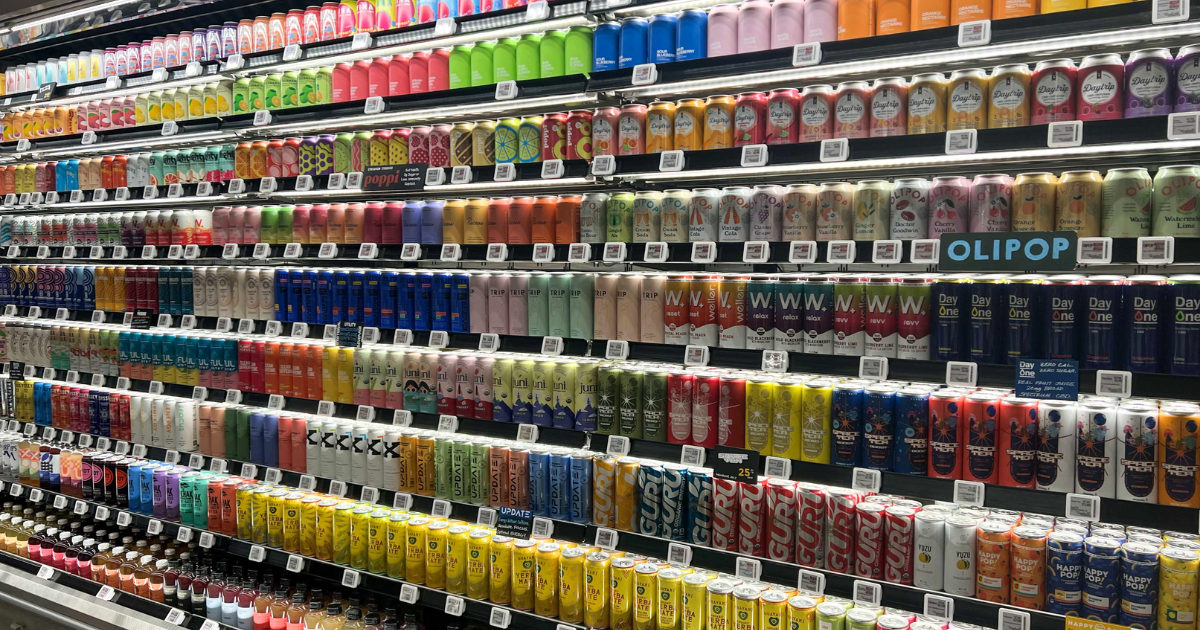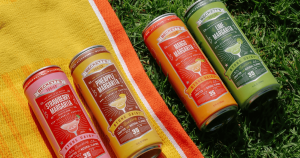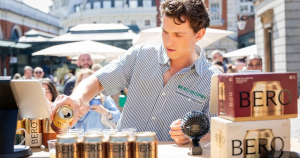When a product lands on retail shelves and starts to gather dust, it’s rarely because the drink didn’t taste good.
That’s the starting point for Courtney O’Brien, founder of The Outlier Initiative and former brand leader at Coca-Cola and Danone. Here, Courtney shares insights from her work helping non-alc brands navigate inflection points, build velocity, and position themselves for longevity, not just hype.
Most importantly, she unpacks what separates the brands that break out from the ones that stall, and why discipline and consumer empathy are the non-negotiables for growth.
Dry Atlas: You’ve said before that most non-alc brands don’t fail because of the liquid. So what actually trips them up?
Courtney O’Brien: It’s positioning, messaging, or a lack of strategic focus. I see brands trying to sprint from idea to national rollout in five years flat, as if their entire lifecycle has to play out before the next funding round. When you’re chasing endcaps and viral moments instead of consumer belonging, it shows. And the consumer can tell. They can sense when a brand is in it for the exit.
If you were building your brand to run it for the next 30 years, you’d make very different choices.
DA: What’s one early-stage decision that founders tend to over-prioritize?
CO: Distribution. Everyone wants to get their baby out into the world. But saying “I’ll go anywhere that will take me” is risky. You’re not always prepared to support those accounts. And once you roll out, you can’t roll back. You only get to be new once.
You need a clear go-to-market plan: one that starts with who you serve and what they need, not just who says yes.
DA: Let’s say a big retailer like Whole Foods wants to take you national, but your brand isn’t ready. How should a founder approach that conversation?
CO: You’ve got to ask yourself: are we ready to support this? Because if you’re not—and your product sits there collecting dust—you’re damaging your brand, your shelf reputation, and your chances of getting back in later.
That “yes” can turn into a negative flywheel real fast. Retailers aren’t trying to build your brand. They’re looking for what benefits them. If you don’t perform, they’ll move on.
So you need a purposeful channel strategy. Know what you’re saying yes to, and why. The opportunity may come again. But being unprepared can close more doors than it opens.
DA: Aside from lack of readiness, what other risks do you see when brands scale too quickly?
CO: Focus. If one day you’re planning to launch a new product line and the next you’re scrambling to fulfill a national PO, that whiplash can kill morale and deplete your cash—fast.
Squirrel Syndrome is real. Shiny-object opportunities can distract you from your core strategy. You can pivot, but it needs to be an informed pivot, not panic.
DA: What are the signals that a brand is chasing hype instead of building for the long term?
CO: A few standouts. One is SKU proliferation that outpaces consumer demand. Another is campaigns that seem like they’re written for LinkedIn claps instead of actual consumers.
And then there’s copycat branding. If your brand looks like another Millennial Pink nostalgia brand and it doesn’t solve a clear need, it just looks like a money grab.
There’s room for originality. Let’s not keep launching the same thing in different cans.
DA: What do retail buyers actually care about? What wins their attention?
CO: They care about what moves. Period. It’s like college admissions: you can have perfect grades, but they’re curating a class. They’re asking: does this fill a gap? Will this bring new shoppers to our store?
You have to show them how your product will perform without you hand-selling it. What’s the margin strategy? What tools are you using to drive velocity?
And be empathetic. Don’t pitch based on what you love about your product. Show them what it’s going to do for them.
DA: So even if consumers love the product, the buyer might still pass. Why else might that happen?
CO: Because your pitch is unclear. Founders get so close to the brand that they forget to actually explain it. Everyone thinks they have a great product. But that’s table stakes.
What else are you offering that makes this a long-term asset? If it’s just “we’re new and taste great,” that’s not enough. What problem are you solving? Who are you solving it for?
DA: How should founders gather real consumer insight, beyond just anecdotal feedback?
CO: Start with online research. Reddit threads. Facebook groups. TikTok comment sections. You’re looking for patterns, frustrations, workarounds. Not “I wish someone would invent ABC,” but “I’m tired of XYZ always happening.”
Once you’re in-market, watch what potential consumers say, not just your loyal fans. What trends are emerging? What cultural conversations are shifting? What hole could your product fill that no one’s addressing yet?
DA: Let’s talk about SKU creep. When is expanding the line actually a good idea, and when does it hurt more than it helps?
CO: It depends on your strategy. If you’re building a functional beverage line designed to meet multiple need states, then sure, you’ll need more than one SKU.
But if your brand stands for something very specific, and your hero SKU is just getting traction, adding more too soon can dilute your message—and your resources. Every new SKU is a bet. If you can’t support it, it might distract more than it helps.
DA: What about seasonal drops and limited editions? Smart move or shiny object?
CO: I’m a fan… if your brand is ready. Seasonals can be fun, keep your brand culturally relevant, and offer a new touchpoint for loyal customers. But they only work if you’ve built a strong enough following that people notice and care.
Otherwise, it’s just more product sitting unsold post-holiday. It has to be strategic, and it has to be paired with a plan to move it.
DA: Let’s wrap with velocity. What actually moves product once you’re on shelves?
CO: Clarity over cleverness, always. Make sure people understand exactly what you are, why you exist, and what’s in it for them.
Then it’s price-to-value. Does your price match what the consumer thinks they’re getting? That’s a huge piece in non-alc, where people still question why they should pay more for less ABV.
Finally, you need tools to drive velocity: campaigns, education, visibility. Products rarely “just move.” There’s almost always an intentional strategy behind it.
DA: If you had to sum it all up, what are the principles that keep a non-alc brand from stalling before they hit $10M?
CO:
1. Audience clarity and positioning. If you say you’re for “all women,” you haven’t done enough work. Specificity is what wins.
2. Product quality that earns trust. Great taste isn’t enough. R&D matters.
3. Messaging that builds your story, not just noise.
4. Shelf presence and packaging that’s channel-specific. What works DTC won’t always work in retail.
5. Innovation that reinforces your story. Everything you launch should build on your core. Don’t fracture it by trying to be edgy or too out of your comfort zone.
If you keep those five things front and center, you’ll stay focused and give yourself a real shot at longevity.
This interview has been adapted from a Dry Atlas webinar for length and clarity. The recording is available to our community members, along with access to our entire webinar archive and other exclusive resources. Unlock everything with your free trial →






